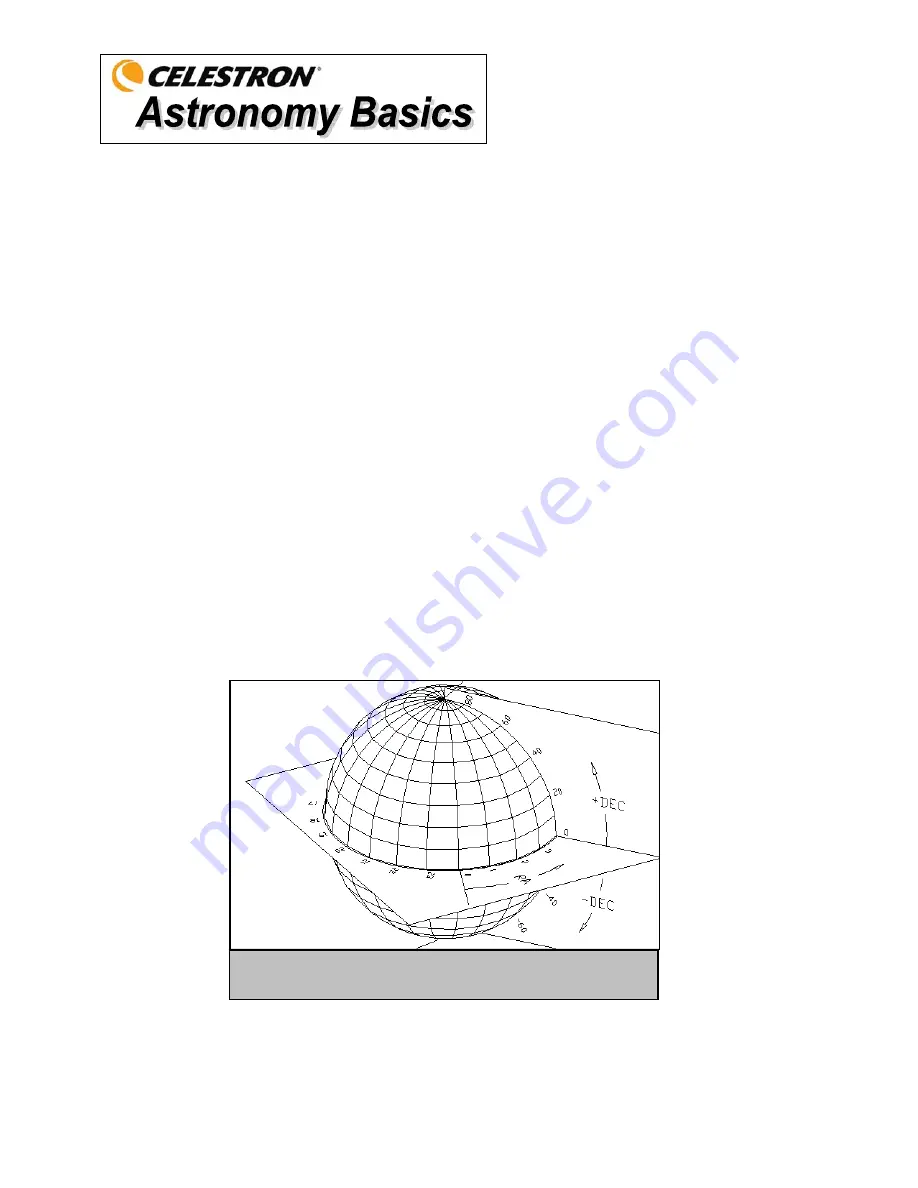
8
Up to this point, this manual covered the assembly and basic operation of your telescope. However, to understand
your telescope more thoroughly, you need to know a little about the night sky. This section deals with observational
astronomy in general and includes information on the night sky and polar alignment.
For telescopes with equatorial mounts, the users have setting circles and polar alignment methods to help them find
objects in the sky. With your altazimuth mount, you can use a method called “star hopping” which is described in
the “Celestial Observing Section” later in this manual. Good star maps are essential in helping you locate deep sky
objects and current monthly astronomy magazines will help you locate where the planets are.
T
T
h
h
e
e
C
C
e
e
l
l
e
e
s
s
t
t
i
i
a
a
l
l
C
C
o
o
o
o
r
r
d
d
i
i
n
n
a
a
t
t
e
e
S
S
y
y
s
s
t
t
e
e
m
m
To help find objects in the sky, astronomers use a celestial coordinate system that is similar to our geographical co-
ordinate system here on Earth. The celestial coordinate system has poles, lines of longitude and latitude, and an
equator. For the most part, these remain fixed against the background stars.
The celestial equator runs 360 degrees around the Earth and separates the northern celestial hemisphere from the
southern. Like the Earth's equator, it bears a reading of zero degrees. On Earth this would be latitude. However, in
the sky this is referred to as declination, or DEC for short. Lines of declination are named for their angular distance
above and below the celestial equator. The lines are broken down into degrees, minutes of arc, and seconds of arc.
Declination readings south of the equator carry a minus sign (-) in front of the coordinate and those north of the
celestial equator are either blank (i.e., no designation) or preceded by a plus sign (+).
The celestial equivalent of longitude is called Right Ascension, or R.A. for short. Like the Earth's lines of longitude,
they run from pole to pole and are evenly spaced 15 degrees apart. Although the longitude lines are separated by an
angular distance, they are also a measure of time. Each line of longitude is one hour apart from the next. Since the
Earth rotates once every 24 hours, there are 24 lines total. As a result, the R.A. coordinates are marked off in units
of time. It begins with an arbitrary point in the constellation of Pisces designated as 0 hours, 0 minutes, 0 seconds.
All other points are designated by how far (i.e., how long) they lag behind this coordinate after it passes overhead
moving toward the west.
Figure 4-1
The celestial sphere seen from the outside showing R.A. and DEC.






























